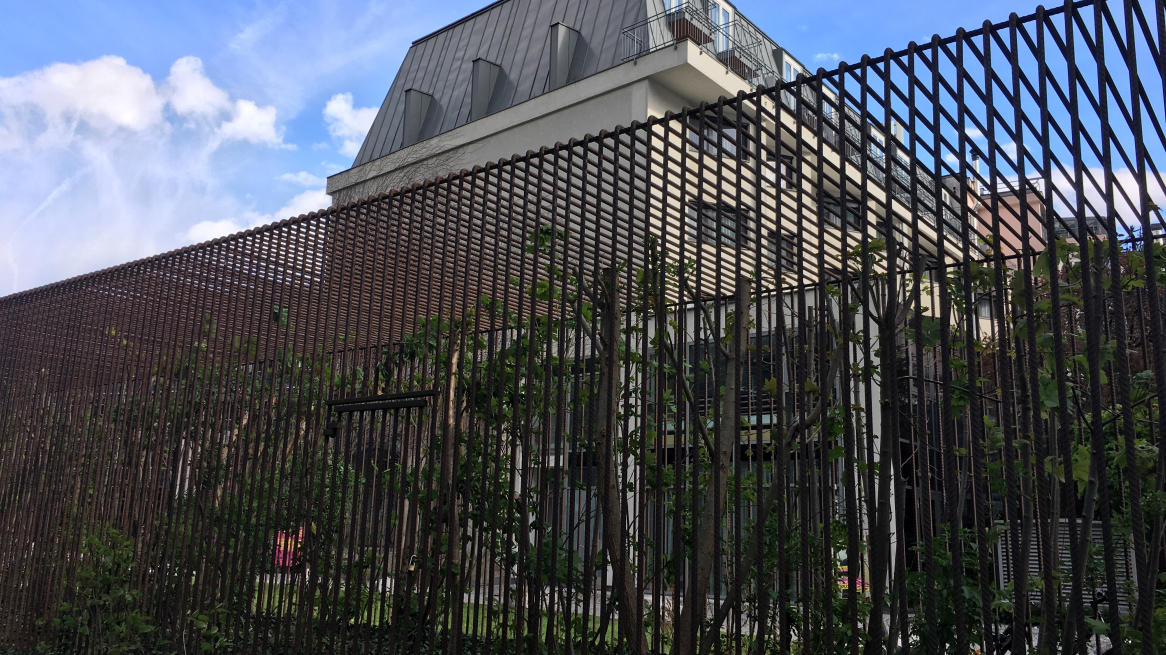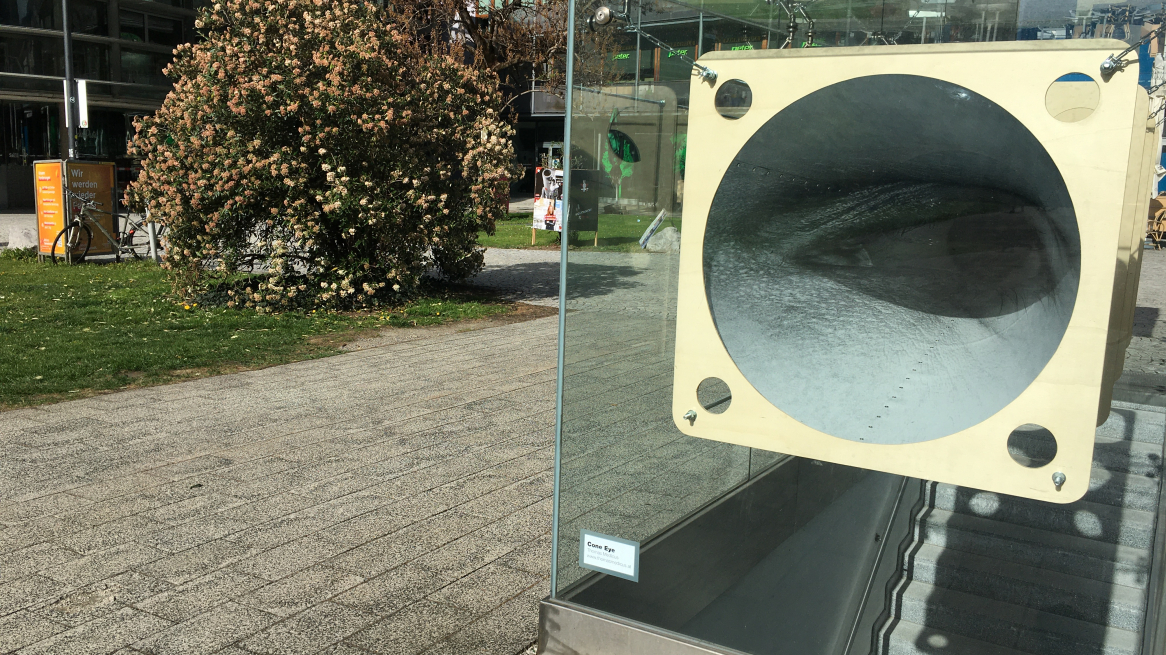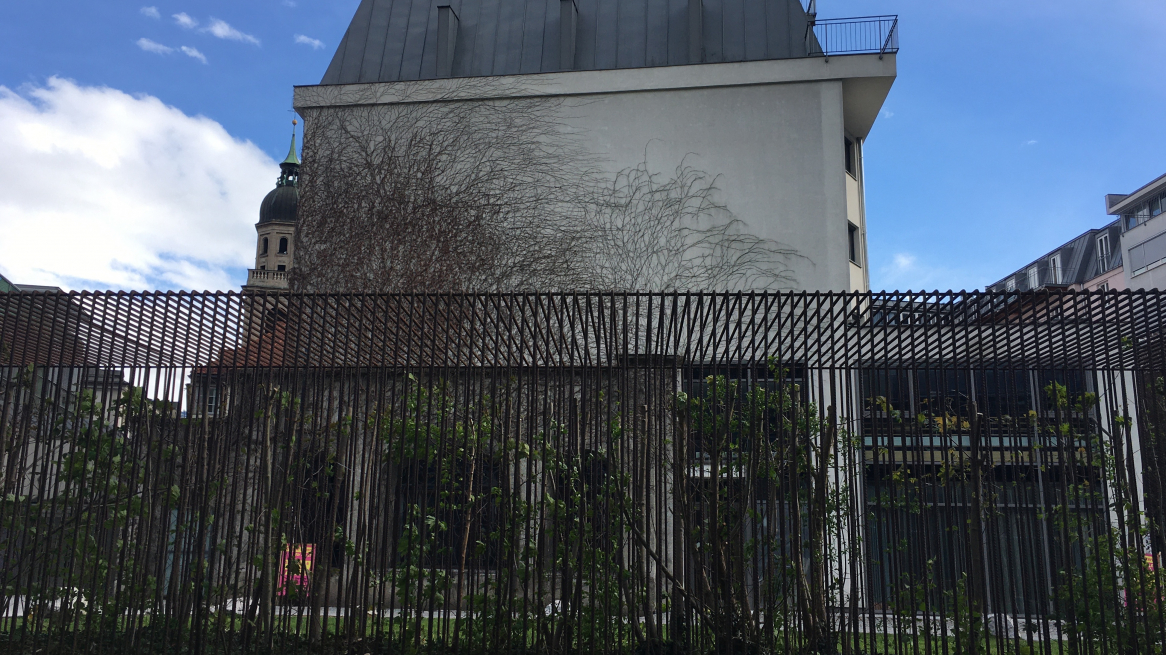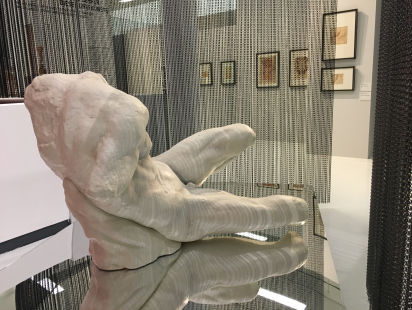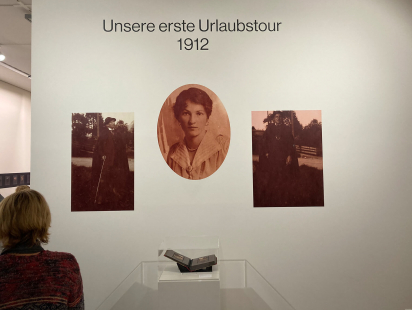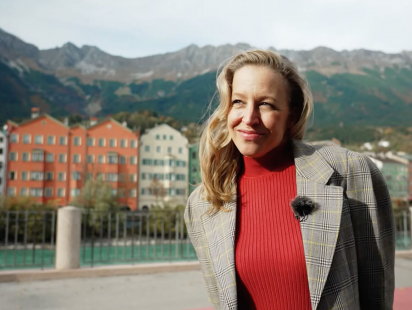Art is at home in museums, you think, but how many works of art are scattered throughout the cities? Much more than we are aware of. Clearly visible in squares and parks, but also on display in hidden passages and courtyards, at the entrance to car parks or on the side walls of buildings (I'm not referring to street art here). Works of art mix with the flow of everyday life. We pass by them, sometimes without noticing, sometimes looking at them distractedly for a few seconds. Personally, I like to think I find art on my path when I go to catch the bus or run an errand. Let's start our art walk together in stages through the centre of Innsbruck.
LOVE OR HATE AT THE GOLDEN ROOF?
To miss this work of art, you'd have to be particularly overthinking! In front of Innsbruck's Golden Roof, the heart of thecity's historic centre, a sculpture made of letters appears. It is the work LOVE HATE by the German artist Mia Florentine Weiss, born in 1980. Standing in front of the Golden Roof you can clearly see the words "Love", but if you read the same letters on the other side of the sculpture the message that appears is "Hate". This work, which arrived in the Tyrolean capital on the initiative of the art gallery artdepot of Innsbruck, has been exhibited in symbolic places in various European cities, such as Munich, Berlin, Prague, Brussels and Moscow. It has travelled carrying a message of peace, but above all a reflection on the change of perspective.
The artist Mia Florentine Weiss on her sculpture LOVE HATE in front of the Golden Roof, Photo © artdepot
INVITATION TO "HEAR" AT THE FERDINANDEUM
Since February 2021, anyone passing by the Ferdinandeum, Innsbruck's regional art museum, may have noticed that a large bronze ear has appeared on the building's west façade, framed by a walled-up window. It is a work by the artist Julia Bornefeld, born in 1963. The sculpture is entitled "Hearing". The German artist chose a title in Italian, because this verb refers to the collection of acoustic stimuli, but also to feeling a sensation or an emotion (while in German, as in English, two distinct verbs are used: hören come to hear and fühlen come to feel). Choosing an iconographic element rather loved by artists in the last 500 years (for example from Bosch to Dalí), Bornefeld invites - in my opinion with the lightness of irony - passers-by to active listening.
The work 'Sentire' (2020) by Julia Bornefeld on the Ferdinandeum, Photo © Tiroler Landesmuseen / Johannes Plattner
"CONE EYE" IN THE COURTYARD OF THE SOWI UNIVERSITY CAMPUS
If you walk from the Hofburg to the Universitästraße, it takes just five minutes to reach what is colloquially known as the "SoWi", the university campus of Innsbruck's political and social science faculties. Here, in the courtyard, we find the work "Cone Eye" by Tyrolean Thomas Medicus, born in 1988. The installation hangs above the stairs of the pedestrian access to the carport below. It is the image of an eye inside a cone - hence the title of the work - depicted in an anamorphic way. This is the technique of representation that deforms an object and makes it recognizable only if it is observed from a particular point of view Here the artist chooses to work by depicting the organ used to collect visual stimuli as a threshold between us and the outside world, evoking themes such as interpretation and subjectivity.
THE WEINBERGER'S WILD CUBE
Also in the same courtyard, towards the back of the Landestheater, a large "green" cage can be seen. This is the work "Wild Cube" by the internationally renowned Tyrolean artist Lois Weinberger (1947-2020) (1947-2020), an internationally renowned Tyrolean artist who has also exhibited at the Austrian pavilion at the Venice Biennale and Documenta. At the heart of her research is the relationship between art and nature. In this work, which has also been realised in various versions in other Austrian cities, an enclosure is built, but it is permeable and therefore plays on the ambiguity between delimitation and contiguity between inside and outside. In the "Wild Cube" the real sculpture is the wild vegetation, becauseéas the artist writes, here "it grows what it wants". The work is constantly changing, in accordance with the seasons. Now the trees and shrubs are still at the beginning of their awakening phase, but when, at the end of the summer, the vegetation reaches the maximum of its expansion, branches and fronds go beyond the bars, coming out of the perimeter of the cage and making it disappear at times.
USEFUL INFORMATION
LOVE HATE by Mia Florentine Weiss
In front of the golden canopy
Herzog-Frierdich-Strasse 15, Innsbruck
Sentire by Julia Bornefeld
Ferdinandeum, west side
Museumstrasse 15, Innsbruck
Cone Eye by Thomas Medicus
Courtyard of the SoWi University
Universitätstrasse 15, Innsbruck
Wild Cube by Lois Weinberger
Courtyard of the SoWi University
Universitätstrasse 15, Innsbruck
Rate this article
Show me the location on the map
A visual artist from Milan who not only works with brushes and canvases but also loves writing about art, culture, music, design and creativity.
Similar articles
It is open until April 18, 2022 at the regional museum Ferdinandeum in Innsbruck…
It was some years ago that Roland Sila, head of the Ferdinandeum library, discovered…
On December 7, a new comedy series starring Nina Proll will start on ServusTV. "Aus die Maus"…
Innsbruck couldn't have dressed up better this October. The air is bone-chillingly cold, the view of the…

